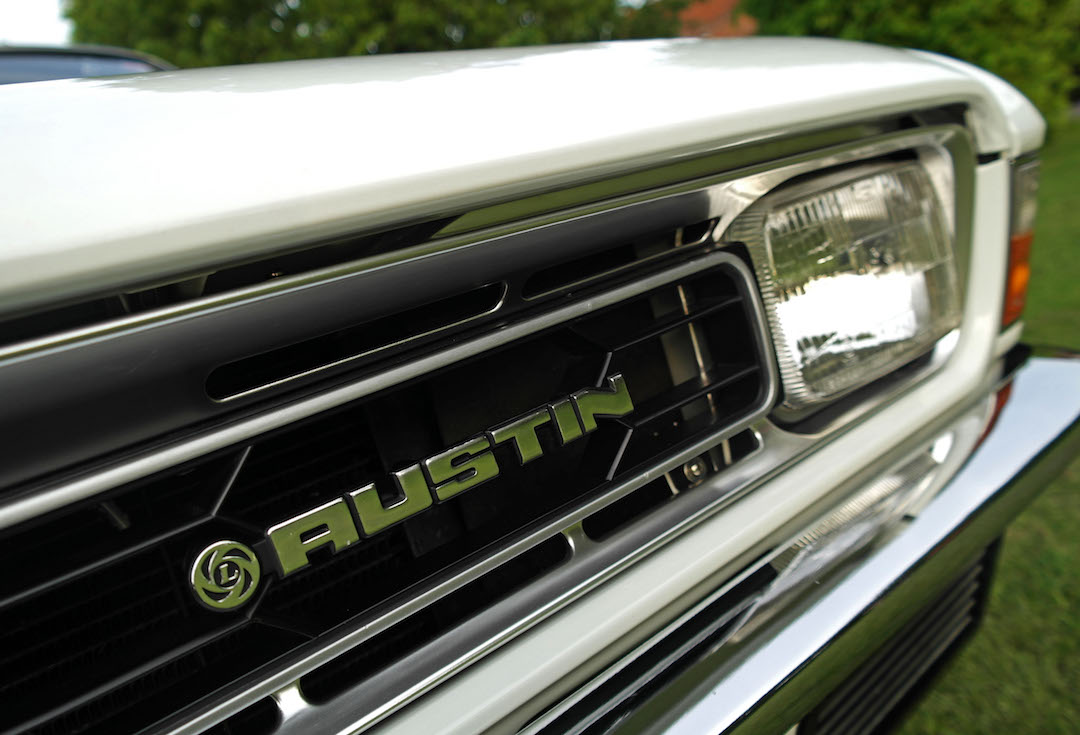" The 1972 Leyland-Crompton electric car prototype was a response to the Oil crisis by BL, with a Michelotti body on a Mini chassis The collaboration between the lesser known carrozzeria Michelotti and British Leyland goes back to the mid fifties. Like "

Austin Allegro: 45 years of undeserved aggravation?
Designed by the man who also penned the Triumph TR7, British Leyland’s 1970s great white hope appeared against a bleak backdrop of strikes and company in-fighting. Is it any wonder it suffered infamous notoriety?
The Austin Allegro. Forever derided and an almost permanent squatter in any ‘Britain’s Worst Car’ list. 2018 marks the Allegro’s 45th birthday, so perhaps the time has come for a re-evaluation. A drive in a showroom-fresh Allegro may help to see if it deserves it tainted reputation.
The British Leyland Motor Corporation’s project ‘ADO67’ got off the development starting blocks in 1968, and debuted in Marbella on 17 May 1973. A replacement for the very popular and well-loved Austin 1100 and 1300 – Britain’s best-selling car from 1963 to 1966 and 1968 to 1971 no less – the Allegro adopted a more forward-looking and contemporary hatchback shape. Except it didn’t have a hatchback, just a saloon-type opening luggage lid. Internal politics allowed the larger Maxi to have an opening rear door, not the potentially bigger-selling Allegro. Mistake number one.
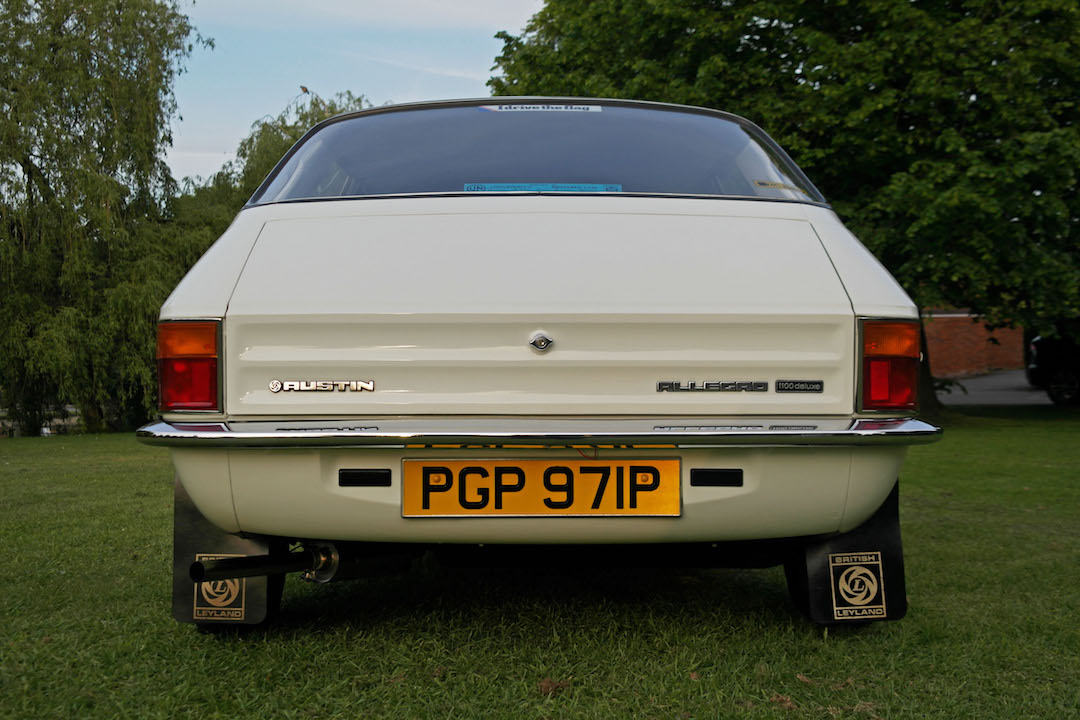
Mistake number two was to not adopt stylist Harris Mann’s original sleek look for the new Austin family saloon. Early sketches dictated a more rakish and wedge-like appearance in a similar vein to Mann’s larger and later Princess, but the necessity to use the Morris Marina’s heating system and the Maxi’s enlarged E-Series 1,485cc and 1,748cc engines made British Leyland’s new baby elegantly bloated. But, it was certainly very distinctive. And that was before the Estate arrived in April 1975 with its upturned rear window.
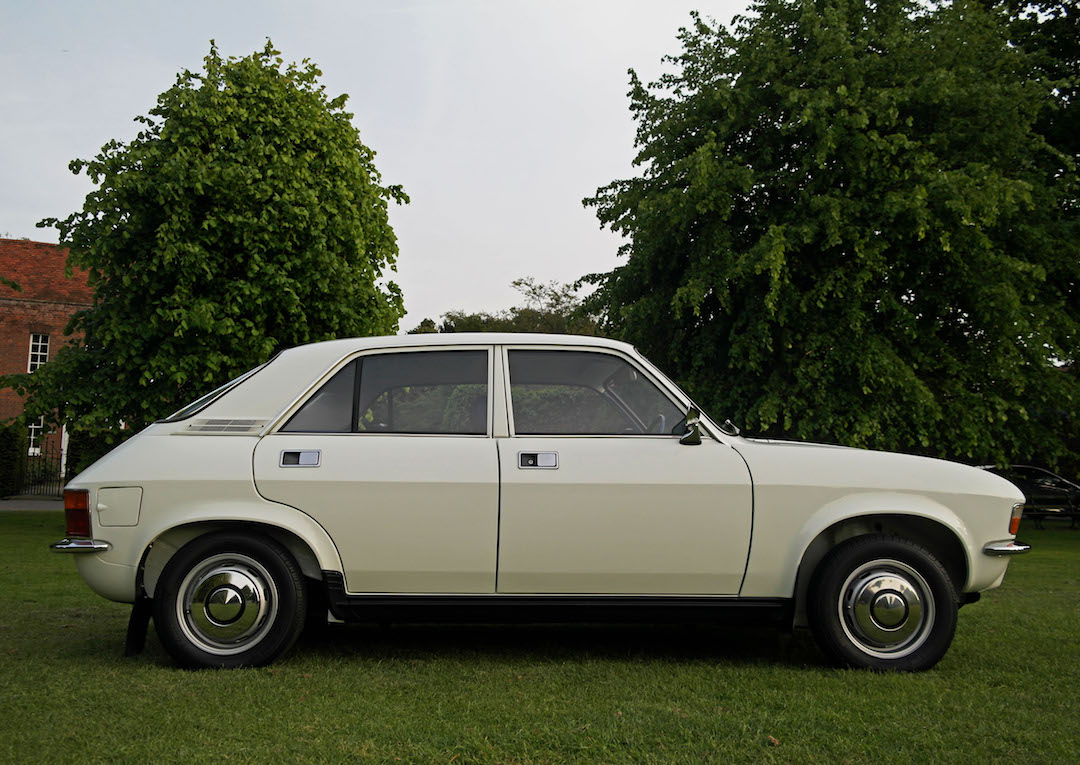
With its rear pillar vents, square rear lights, pointy rear end and slightly squared-off rear wheel arches, the Allegro’s not without a certain sense of style. Talking of squared-off things – and potentially mistake number three – let’s not talk about the infamous ‘Quartic’ steering wheel. It had disappeared by the time of the 1975 Allegro 2 anyway.
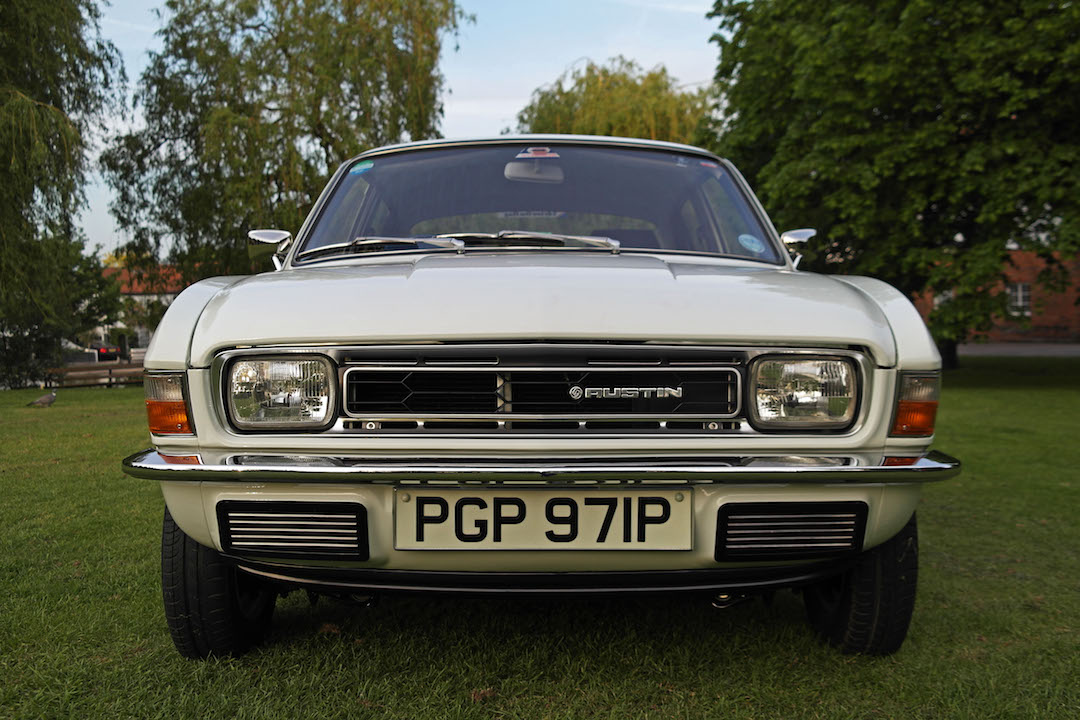
OK, we admit, we’re spoiled by Tom Morley’s 1976 Allegro 1100 De-luxe. Built in the first year of Allegro 2 production, the ‘phase two’ cars were distinguished from earlier cars by their new grille, and Tom’s Glacier White car is as near to an original Allegro you will find. With just over a staggeringly low 23,000 miles under its tyres, ‘Gladys’ is completely unmolested and unrestored. You almost feel guilty climbing in and lowering yourself onto the very 1970s vinyl seats and resting your feet on the period rubber floor mats.
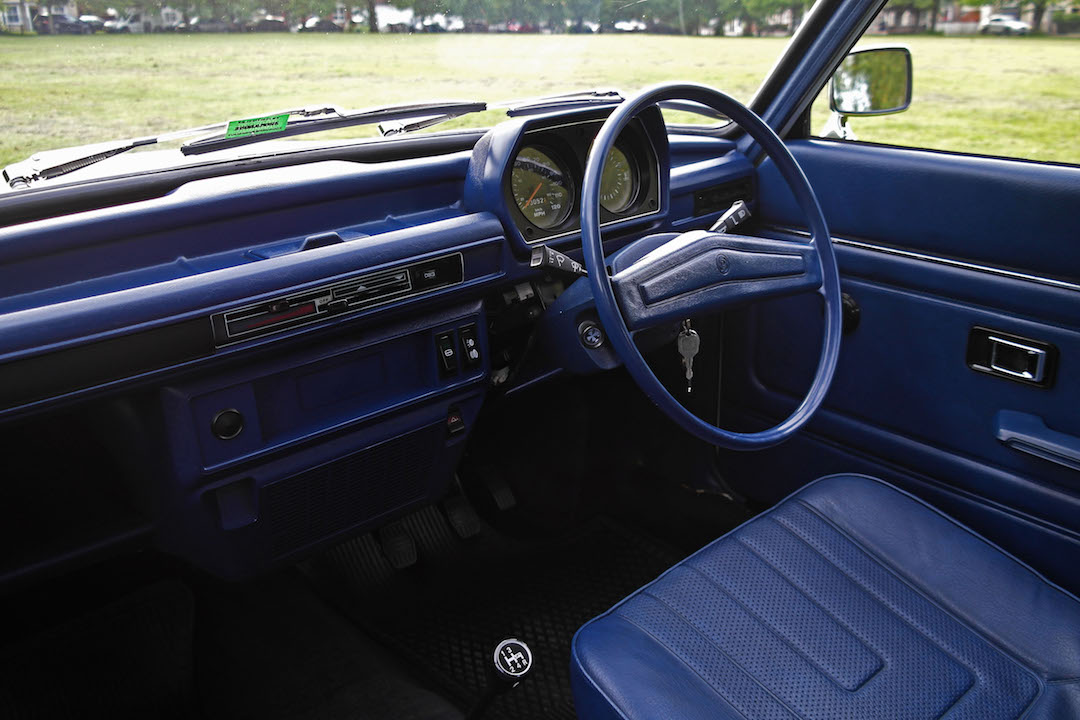
Once you’re settled in, though, your eyes have to adjust to the retina-snapping Regal Blue interior. And there’s a lot of it. The dashboard, door panels, seats, A-pillars and even the – round – steering wheel are all covered in, or made from, bright blue vinyl or plastic. But that just adds to the retro appeal of this car. As does it’s unsullied, and to be honest, frankly jaw-dropping condition. It really is a time-warp classic.
On the move, Tom’s car pootles through the town centre and down country lanes smoothly and with a spring in its step (that will be helped by the complete and utter obsessional lack of dirt under its arches and low miles), its 45bhp 1,098cc A-Series engine purring along in the fast-setting Friday evening sunshine, its four-speed gearbox exhibiting the well-known ‘BMC’ whine. It’s evocative stuff.
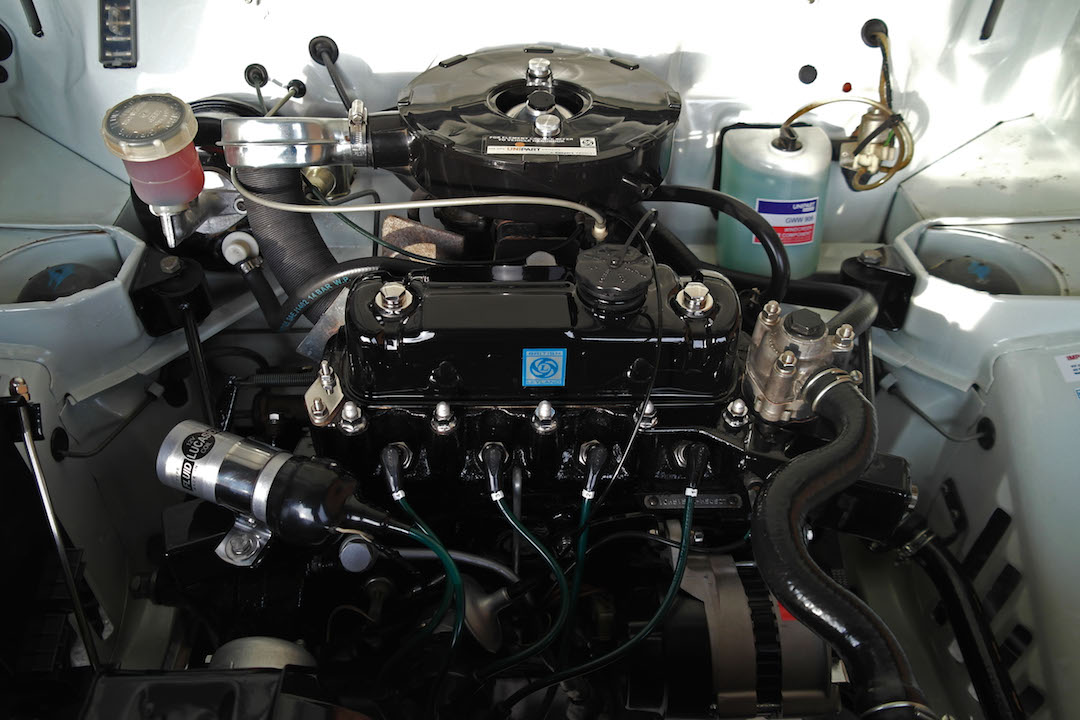
Although ‘Gladys’ is used just for shows these days, Tom reports that ‘she’ regularly returns around 50mpg on a run, which, in its contemporary 1970s age landscaped by the fuel crisis, is genuinely impressive. Even today, where fuel economy is a key selling feature of a modern car, few small petrol-engined cars would struggle to achieve the same feat. Turns out it wasn’t all bad news with the Allegro’s engineering after all.
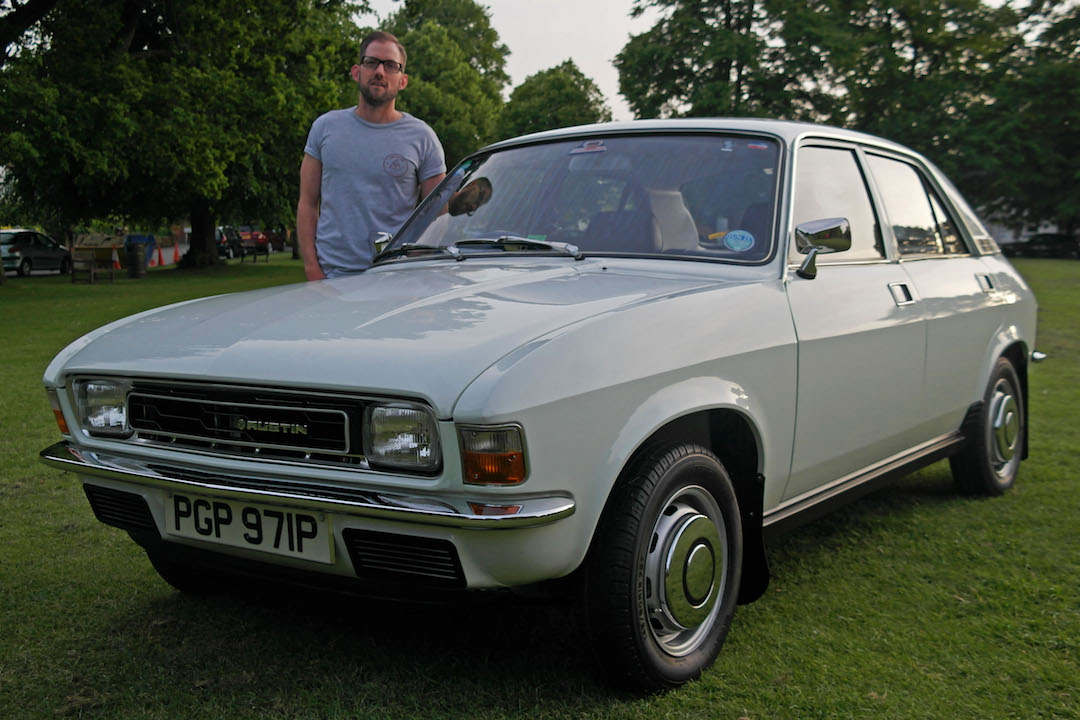
But why is Tom so smitten? “I love the Allegro, as it was once a much-maligned product of the ‘70s and rarely viewed as a classic. But, it is now a cult classic and it gets loads of attention wherever it goes.” The Event Organiser of the Allegro Owner’s Club, he attended the recent ‘Allegro 45’ celebratory event at The British Motor Museum at Gaydon on 20 May. Over 40 enthusiasts worshipped all things Allegro and there was even a cake-cutting ceremony by Harris Mann himself.

“It was fabulous day blessed with sunshine and an amazing array of Allegros of all models and colours,” said Tom. Harris Mann had a great time chatting to owners about their cherished Allegros and was also made the Club President during the prizegiving which was a lovely way to round of the event.” Such a quintessential English celebration was it, we would hazard a guess that there was no ‘All-aggro’ that afternoon…
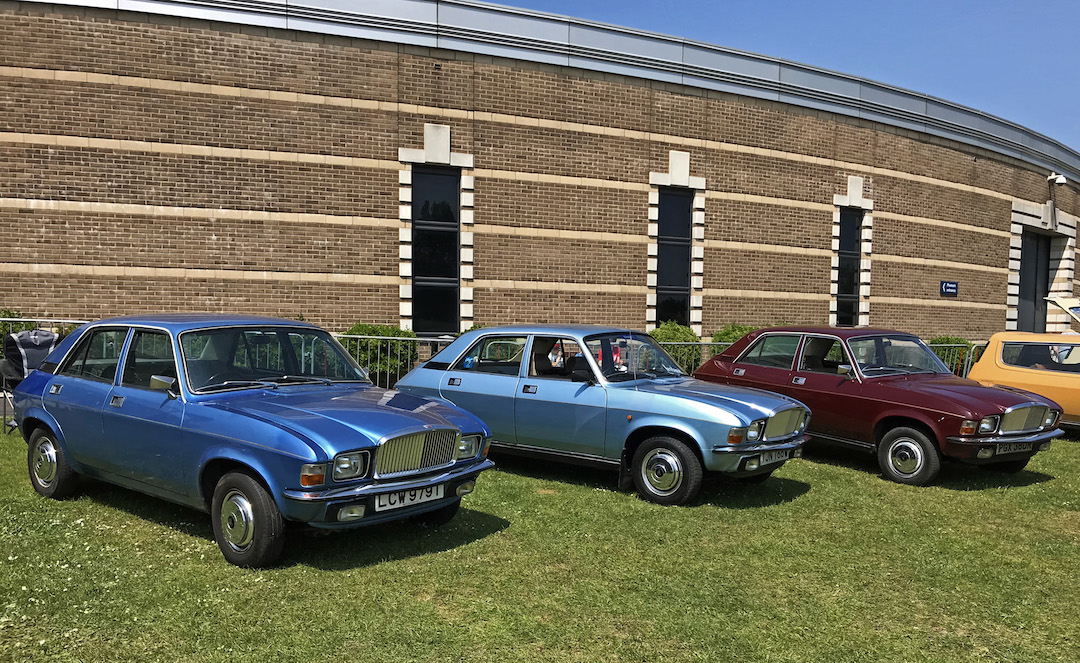
And Tom is by no means the only Allegro devotee. By the time of its demise in 1982 after a decade in production – the square-edged and voice synthesised Austin Maestro replaced it – over 642,000 had found homes over 10 years (its successor managed just 605,000 over 12 years), thanks in part to a broadened and constantly improved model range. The Allegro 3 came in 1979 and ushered in larger bumpers, a front spoiler, new colours, lights, and wheel trims, as well as side repeaters. The new mini Metro’s ‘A-Plus’ A-Series engine came in 1981.
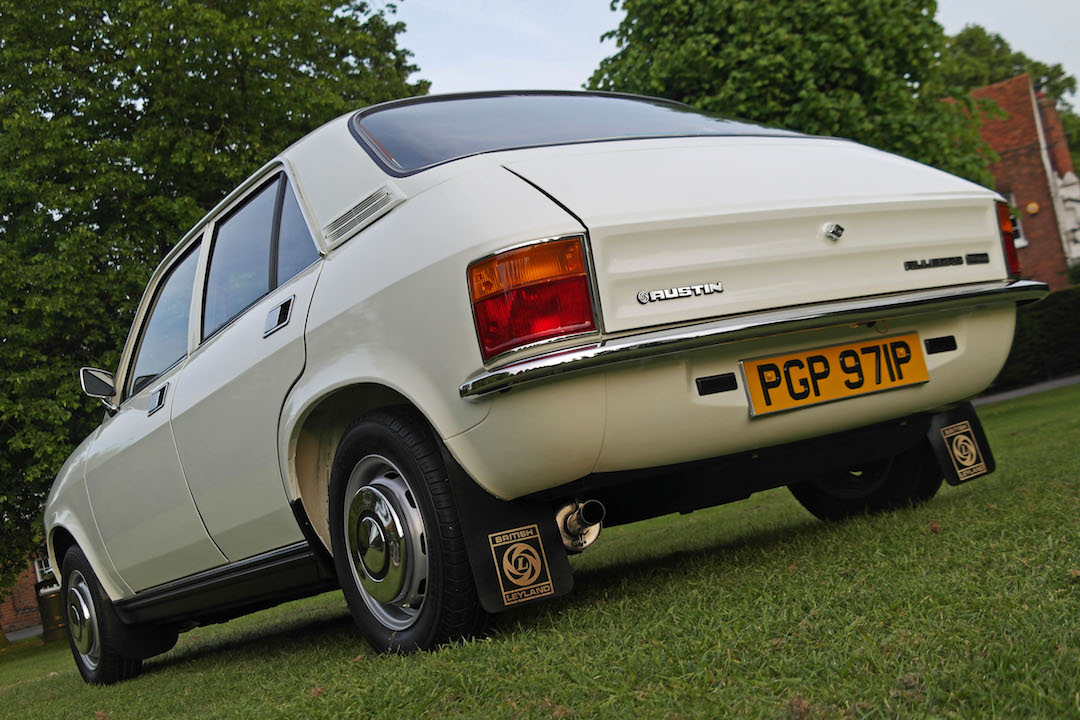
Niche models included the 1750 HL-based Equipe with its silver paintwork, finned alloy wheels and Starsky and Hutch-style red and orange side stripes, and the Vanden Plas 1500, a kind of bargain-basement Rolls-Royce complete with oversized chrome front grille and walnut picnic trays on the back of the front seats. Even Innocenti sold a version in Italy called the Regent, but it only lasted 18 months.
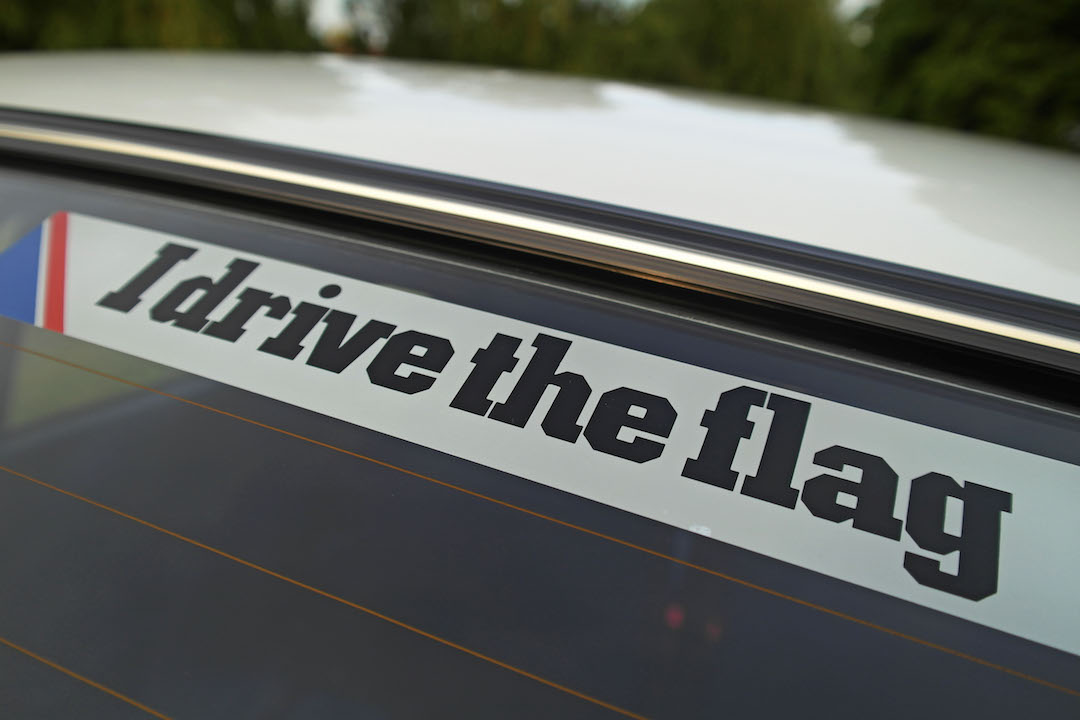
It’s easy to bash Austin’s ‘Flying Pig’, but few cars deemed as ‘failures’ can muster up such unwavering support as they move towards their fifth decade. In fact, their ‘underdog’ nature makes them more appealing. British Leyland models are easy fodder as there were so many ‘failures’, but scratch beyond the surface of the Allegro’s well-documented derision and bad reputation, and you’ll find a genuinely competent car trying to get out. It’s quite jingoistically infectious.
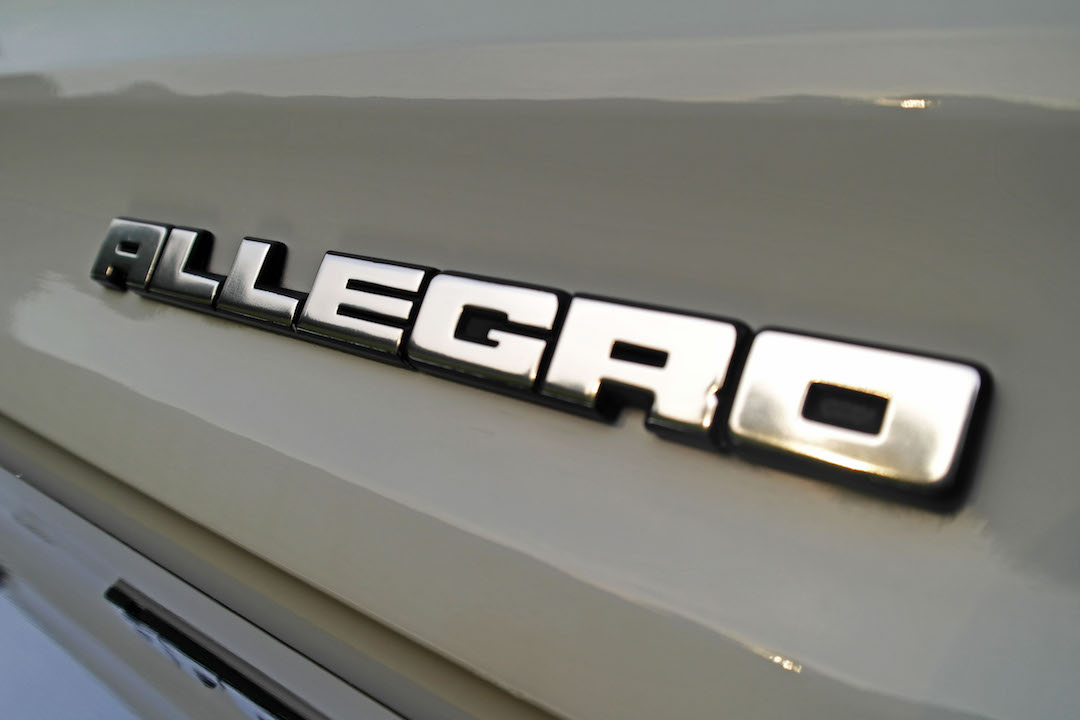
The Allegro may not have been ‘the new driving force from Austin’ that its advertising material promised, but, with its advanced engineering – including the debut of the Hydragas suspension system – and roomy interior, it was a consistent mainstay in Britain’s best-selling car lists during the 1970s. Happy 45th Allegro. Me? I’m off to scour the classified ads for a clean and unmolested Equipe…
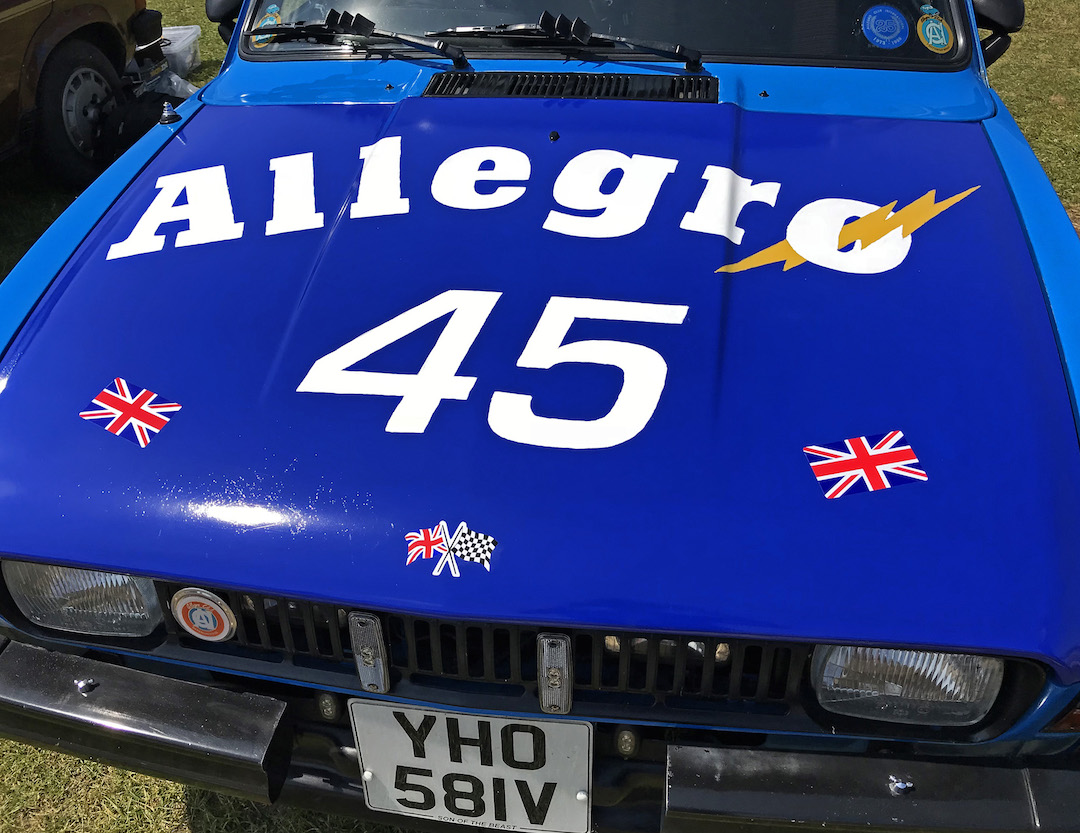
CLICK TO ENLARGE

